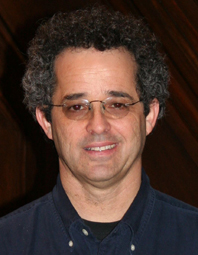
Leo Corry, Ph.D.
Associate Professor of History of Science, Director
Tel Aviv University
The Cohn Institute for the History & Philosophy of Science & Ideas, Tel Aviv University
Born in 1956 in Santiago de Chile
Studied Mathematics at the Universidad Simón Bolivar, Caracas and Mathematics and History and Philosophy of Science at Tel Aviv University
Project
Harry Schutz Vandiver and the Computational Approach to Fermat's Last Theorem
Fermat's Last Theorem (FLT) is a rather esoteric mathematical result, devoid of any applications, in or outside mathematics. At the same time, the statement of the theorem requires no specific mathematical knowledge to be fully comprehended. The theorem was definitively proved in 1994 as a consequence of Andrew Wiles' proof of the Taniyama-Shimura conjecture. FLT and its history immediately became a widely publicized media item.However, contrary to its public image, FLT was a problem to which mathematicians devoted very little serious research effort throughout the years. Harry Schutz Vandiver (1882-1973) was among the very few mathematicians that made considerable progress in research related to the proof of FLT between 1900 and 1970. Still, his approach to this problem has very little in common with the approach that finally led to Wiles' way of attack. His name was completely forgotten from the "victory parades" that followed Wiles' achievement.
Based on a wealth of unpublished archival material I will attempt a reconstruction of Vandiver's mathematical world and the place of FLT within it. In particular, I will focus on his use of calculation devices, including electronic computers after 1950, in a mathematical field where most practitioners at that time would have considered this as sacrilegious.
This planned research will address questions related with intra-disciplinary development of mathematical ideas, as well as with the internal dynamics of the mathematical community and the formation of research traditions.
Recommended Reading
Corry, Leo. Modern Algebra and the Rise of Mathematical Structures. Basel and Boston: Birkhäuser, 1996. (Science Networks Vol. 17.) Second, revised edition: October 2003.
-. The Literary World of Jorge Luis Borges (in Hebrew). Tel Aviv: Ministry of Defense Publications: The Broadcast University, 1997.
-. David Hilbert and the Axiomatization of Physics (1898-1918): From "Grundlagen der Geometrie" to "Grundlagen der Physik". Dordrecht: Kluwer, 2004. Also published in: Archimedes. New Studies in the History and Philosophy of Science and Technology 10 (2004).
Colloquium, 06.04.2006
Fermat's Last Theorem: How a marginal remark became an important mathematical problem. ... Or did it?
Fermat's Last Theorem (FLT) is a rather esoteric mathematical result, devoid of applications in, or outside, mathematics. At the same time, the statement of the theorem is at the reach of laypersons, as it requires no specific mathematical knowledge to be fully comprehended. The theorem was definitively proved in 1994 as a consequence of Andrew Wiles' brilliant work on the so-called "Taniyama-Shimura Conjecture" (TSC).
FLT and its history immediately became a widely publicized media item: a great mathematical mystery had been finally solved more than 300 years after its first formulation. The spirit of the generally accepted story surrounding the theorem is encapsulated in the following passage taken from a best-seller, popular book:
The story of Fermat's Last Theorem is inextricably linked with the history of mathematics, touching on all the major themes of number theory. ... The Last Theorem is at the heart of an intriguing saga of courage, skulduggery, cunning, and tragedy, involving all the greatest heroes of mathematics.
The historical record of FLT, however, shows a different and much less dramatic picture. The theorem aroused curiosity, indeed, but FLT was a problem to which mathematicians, and in particular the leading specialists in number theory, devoted very little serious research effort, if any, throughout the years.
My talk will deal with three interrelated questions:
1. What turns a problem into more or less important in the eyes of mathematicians, and how their criteria change along time?<br>
2. How important was FLT considered to be ever since its formulation?
3. How has the story of FLT been told along the years, and especially after Wiles' proof?
REMARK: Following the talk requires only minimal (truly minimal) mathematical knowledge.
Publications from the Fellows' Library
Corry, Leo (2005)
Introdructions: science in Latin-American contexts - historical studies
Corry, Leo (2005)
Corry, Leo (2004)
Introduction: the history of modern mathematics - writing and rewriting
Corry, Leo (2004)
Corry, Leo (Dordrecht [u.a.], 2004)
David Hilbert and the axiomatization of physics (1898 - 1918) : from Grundlagen der Geometrie to Grundlagen der Physik Archimedes ; Vol. 10
Corry, Leo (Basel, 2004)
Modern algebra and the rise of mathematical structures
Corry, Leo (2003)
Corry, Leo ([Tel Aviv], 1998)
Olamo ha-sifruti shel Horheh Lu'is Borhes Sifriyat "universitah meshuderet"
